 Parks Canada has just announced that it will be putting Wifi into Canada’s National Parks. This has provoked a flurry of debate. Surely the point of a National Park is to enjoy wilderness and undisturbed by emails or the need to connect? After all, we now recognise Nature-Deficit Disorder as a condition and JWT identifies Mindful Living as a key trend.
Parks Canada has just announced that it will be putting Wifi into Canada’s National Parks. This has provoked a flurry of debate. Surely the point of a National Park is to enjoy wilderness and undisturbed by emails or the need to connect? After all, we now recognise Nature-Deficit Disorder as a condition and JWT identifies Mindful Living as a key trend.
SHARING SPURS DREAMING
But I’m going to disagree – this is a fantastic initiative. Sharing has a strong role in driving conversion across the Path to Purchase. Over the years I’ve worked to develop and refine a 7-step path to purchase a model that’s used organisations like Tourism Australia, major hotel chains, cruise companies, and research group TNS. This model differs from the most paths to purchase models in that it recognizes that for travel, the first purchase point is not your last and includes decisions both en route and in a destination. It also recognizes that what you do on your trip may influence my travel decisions as well as your own future ones.
 The Parks Canada approach will allow people at the ‘In destination’ point to share their sublime moments at the point when they happen. Although de-teching (a sub-trend of Mindful Living) is growing, it must always be voluntary. If not, it is experienced as a loss of control. In 2012, 27% of international visitors to Australia on average were using their mobile in destination (with around 12% using a tablet).
The Parks Canada approach will allow people at the ‘In destination’ point to share their sublime moments at the point when they happen. Although de-teching (a sub-trend of Mindful Living) is growing, it must always be voluntary. If not, it is experienced as a loss of control. In 2012, 27% of international visitors to Australia on average were using their mobile in destination (with around 12% using a tablet).
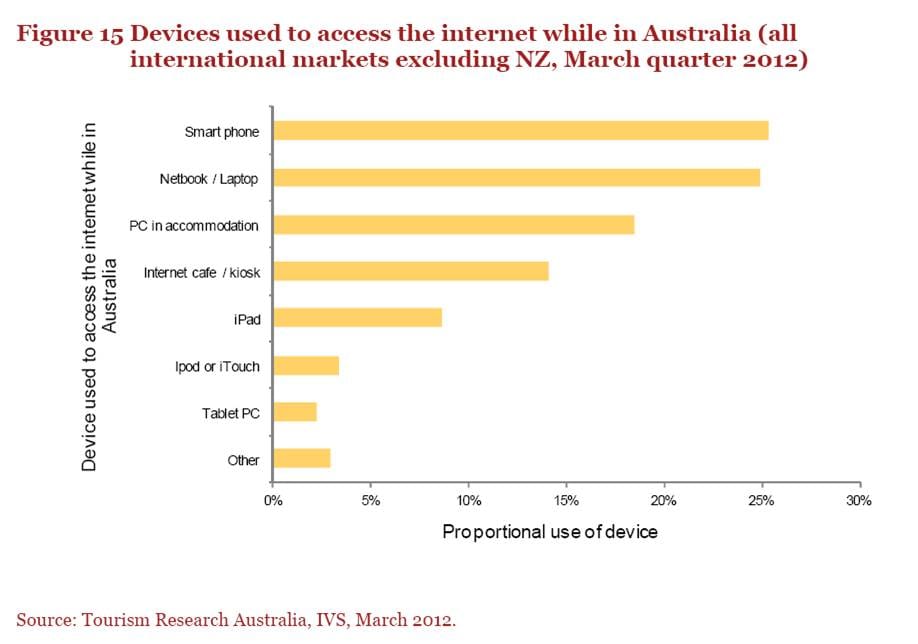
And this trend is quite widely seen across markets – both mature (UK, Germany, and US) and high growth emerging markets (Indonesia, Brazil):
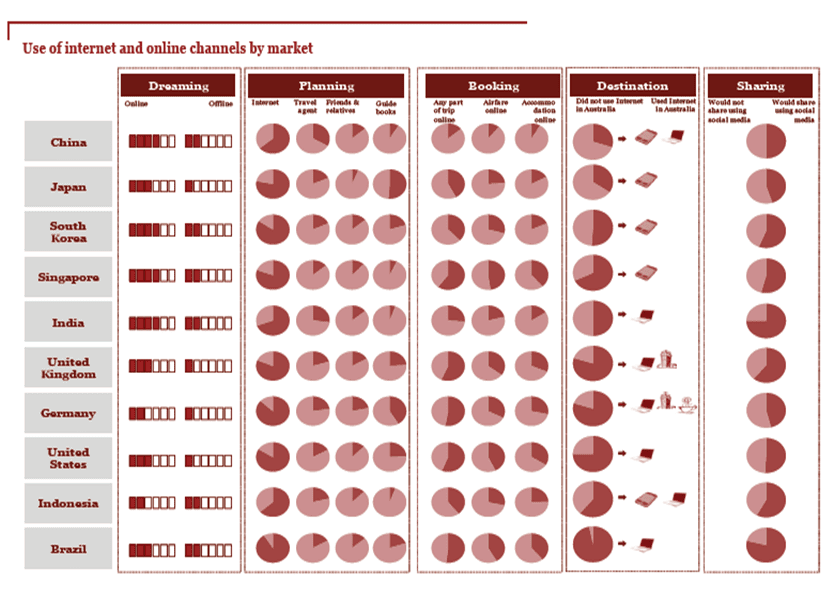
And we can see that these people are choosing to share in destination (especially as free wifi is not yet as ubiquitous in Australia as it is in destinations like the UK, Turkey, or Italy). So giving people the choice to share is critical. I somehow doubt that Parks Canada will provide wifi throughout every part of their vast complex of parks. There will still be plenty of places where those who want to de-tech can escape. By giving people who want to share a place to go you are making your experience more inclusive. Millennials in particular don’t tend to see distinct virtual and ‘real’ worlds. They are also (not coincidentally) the group that parks authorities the world over need to engage if they are to retain a passionate supporter base in the long term.
I can’t think of any better way to create that engagement and drive advocacy than to enable them to share a magic moment ‘live’. This was certainly my own experience in 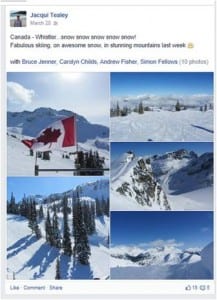 Canada recently. Whistler Resort provides free wifi at its mountain cafes and also at strategically placed and clearly marked Wonder Scenic Viewpoints. When you see a view like this and can post it to the world it really gives you a buzz!
Canada recently. Whistler Resort provides free wifi at its mountain cafes and also at strategically placed and clearly marked Wonder Scenic Viewpoints. When you see a view like this and can post it to the world it really gives you a buzz!
Providing wifi ‘in destination’ is also an incredibly flexible way to enhance your offer. Physical signage must either be long or very generic. But digital signposting and ‘stickers’ can focus on specific interests (e.g. pioneer history or geology). It can also be updated very quickly – for bear alerts or rare birds. All of these can ensure that people really get the best out of their experience.
The ability to post images is a potent marketing tool to other people – influencing them at their ‘Dreaming’ Phase. This is one of the hardest phases to define (the other is Anticipating – which will be the subject of a separate article). Dreaming about travel is what we do before we’ve made any definite decisions. It tends to be quite long in duration – and it is quite hard to measure – because often what we do at this point is unconscious. We often only know we are in the dreaming phase only as we start to leave it and move into the planning phase. This is why engaging content is so important – it provides that inspiration – and even that moment where you HAVE to go and have to go NOW.
For example, our photos posted at the Wonder Scenic Views and in cafes shortly after elicited a stream of conversation about the ‘what/where/how’ among people currently trying to select a destination for their skiing trip. Or who were had long been wondering about Whistler? So that ability to post ‘in the moment’ was a very cost-effective marketing and customer engagement tool relative to almost any other forms of media that could have been used.
That’s why I feel confident that Parks Canada is on the right path.
Or course, the dreaming phase can also be inspired by much other content. Media like YouTube, use of movies and TV series, and traditional brand and product campaigns to inspire desire and turn it into planning. Somehow I suspect the folks at Parks Canada have worked that out too. After all, they just managed to persuade me to divert my blog piece on the role of ‘Dreaming’ into a free publicity piece for their initiative!
Do you want to hear more from us?
Want to be kept up to date with the latest travel and tourism insights? Join Our Mailing List. Every 2 weeks, we send the latest practical insight for you to apply to your business and destination marketing.


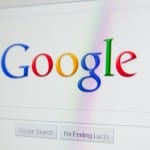
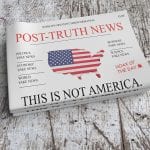
It�s hard to find knowledgeable people on this topic
Thanks, Im glad you enjoyed reading!